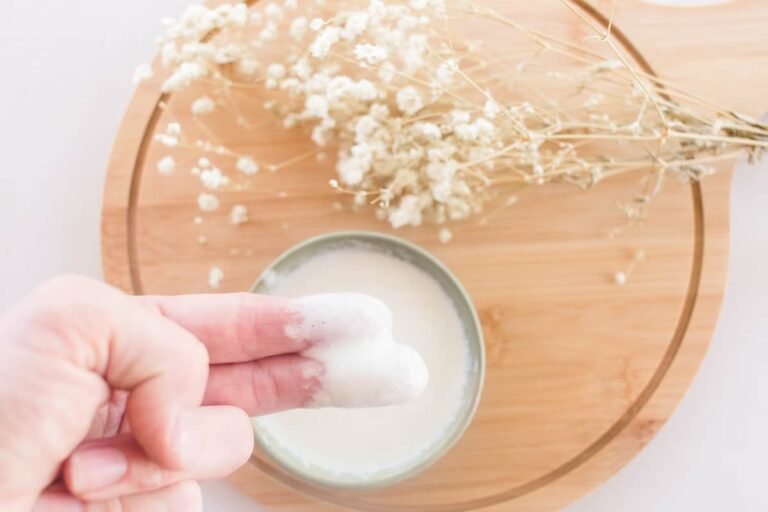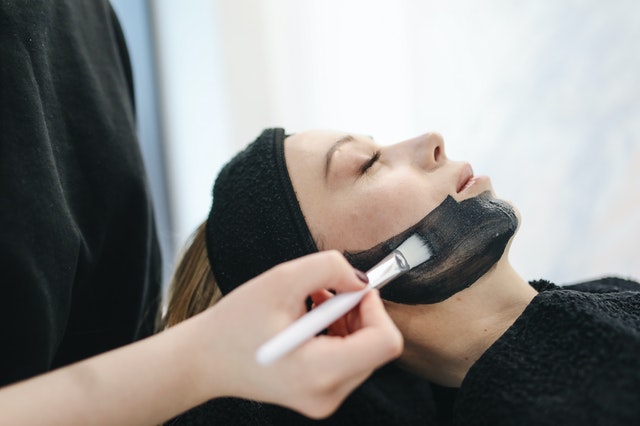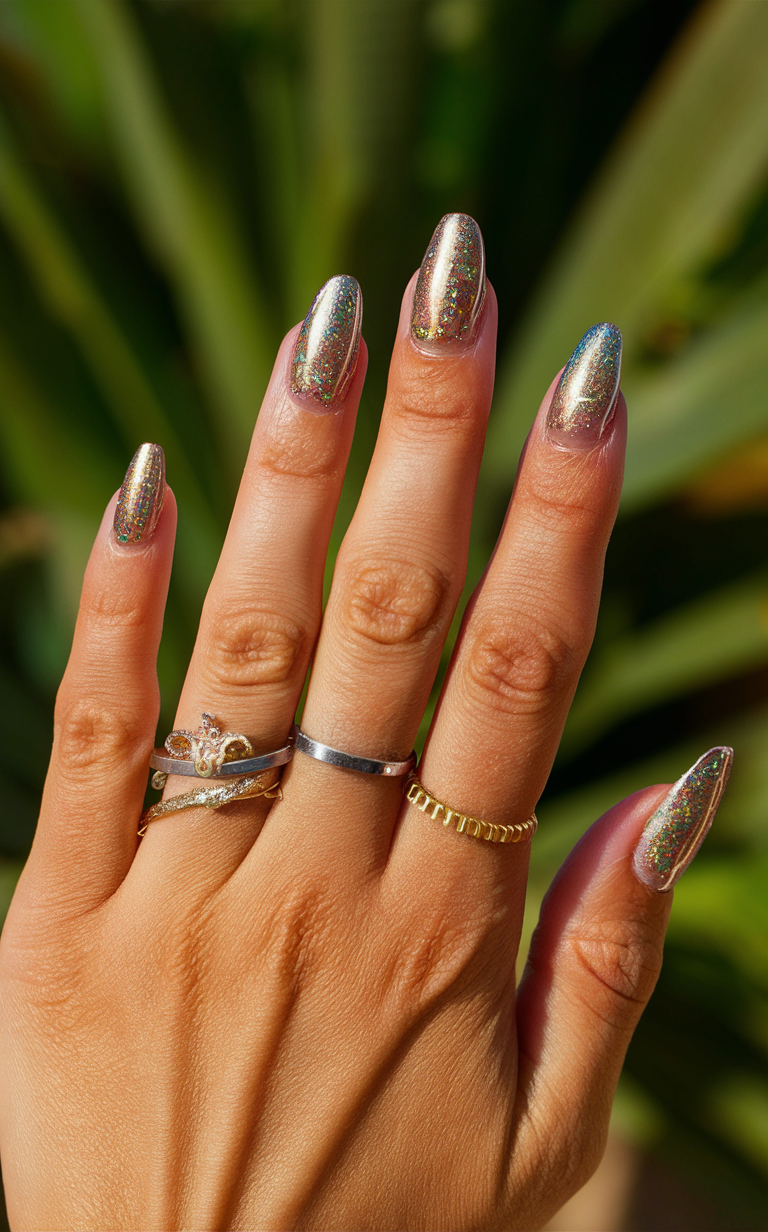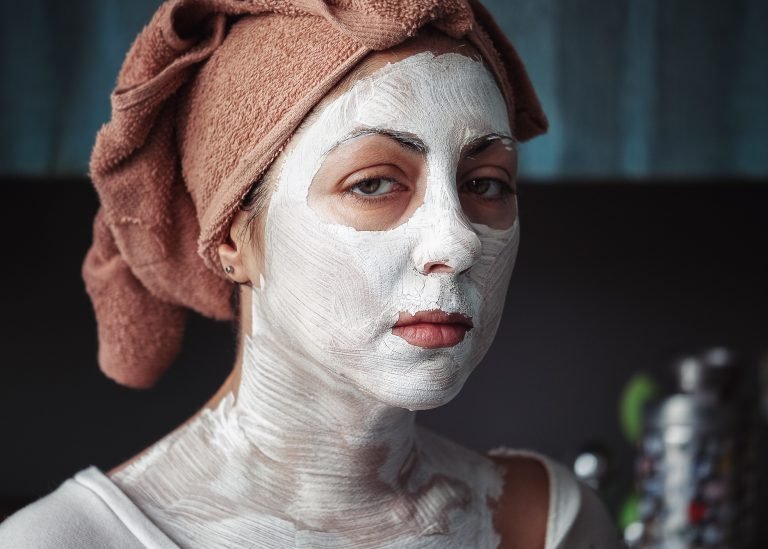How to Make Your Own Natural Shampoo at Home
Shampoo: it’s a fundamental part of our daily routines, elusively tucked away in our bathroom cabinets. But have you ever taken the time to decipher the perplexing list of ingredients on the back of your shampoo bottle? The reality is, most commercial shampoos are filled with hard-to-pronounce chemicals that can produce unwanted side effects like scalp irritation or dry hair. This extended scrutiny often leads many to consider more natural alternatives. In the forthcoming exploration, we will dive into the nitty-gritty details of homemade, natural shampoos, their benefits, and how you can create your own concoction tailored to your specific hair needs.
Understanding the Basics
Understanding How Shampoo Works
The key function of shampoo is to cleanse the hair and scalp of excess oil, sweat, dirt, and impurities. Traditional shampoo typically contains surfactants, which are cleaning agents that possess both oil-attracting (lipophilic) and water-attracting (hydrophilic) properties. This allows surfactants to bind to oil on your hair and then be rinsed away with water.
Commercial Shampoo Ingredients
Commercial shampoos typically contain a myriad of ingredients, many of which are synthetic chemicals. Some of the primary ingredients include:
- Detergents or Surfactants: These ingredients, such as sodium lauryl sulfate, are responsible for the cleaning action and the foamy lather.
- Thickeners: Ingredients such as salt are used to thicken the shampoo.
- Preservatives: Parabens and other chemicals are used to increase the shelf life of the products.
- Fragrances and Colorants: These are added for aesthetic purposes but can sometimes cause allergies and other reactions.
Benefits of Natural Shampoo Alternatives
Switching to homemade natural shampoos can have several benefits. Primarily, they contain fewer synthetic materials and harsh chemicals, reducing the chance of skin/scalp irritation and allergies. Many natural ingredients also have nourishing properties that can help maintain the health and natural shine of your hair.
Components of a Basic Homemade Shampoo

A basic homemade shampoo recipe includes a base, essential oils, and other ingredients beneficial for hair health.
- Base: One commonly used base for homemade shampoo is Castile soap. It’s a vegetable-based soap devoid of synthetic chemicals present in traditional detergents. It’s gentle, non-irritating, and cleanses the hair and scalp effectively.
- Essential oils: Essential oils serve multiple purposes in natural shampoos. Not only do they provide a natural scent, but many have therapeutic properties. For example, tea tree oil has antimicrobial properties, while lavender oil can promote relaxation and reduce stress.
- Other ingredients: Other components can include aloe vera, known for its conditioning and soothing properties, and honey, a natural humectant that helps retain moisture in the hair. Ingredients can be tailor-selected according to one’s specific hair and scalp needs.
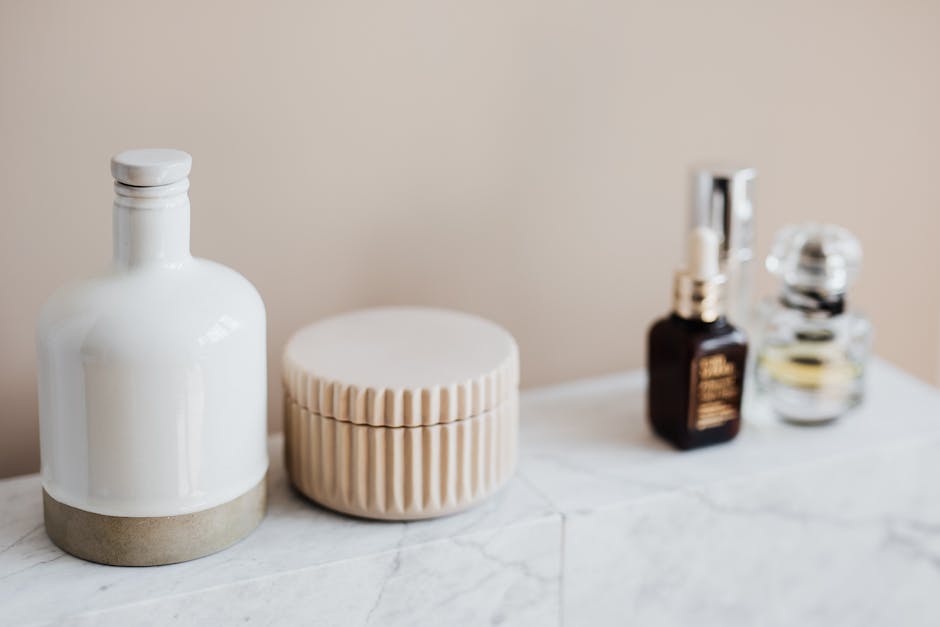
Identifying the Right Ingredients
Identifying the Beneficial Natural Ingredients for Different Hair Types
To create a homemade natural shampoo that suits your hair type and needs, it’s crucial to familiarize yourself with various natural ingredients and their properties.
Apple cider vinegar is a well-rounded ingredient suitable for all hair types. Rich in vitamins and minerals, it can help balance the hair and scalp’s pH levels, promote shine, and reduce frizz.
Coconut milk is highly beneficial for dry or damaged hair types. This ingredient is rich in fatty acids and proteins, which nourishes the hair and scalp while providing deep hydration. It also improves hair elasticity, minimizing breakage.
Aloe vera is a powerhouse ingredient that works well for any hair type, but especially for dry and damaged hair. It’s loaded with vitamins, minerals, and other nutrients that promote healthy hair growth and improve scalp health. Aloe vera has a high moisture content, making it ideal for those with dry or itchy scalps.
Best Essential Oils to use in your Homemade Shampoo Recipes
Essential oils aren’t just for fragrance; they have specific properties that provide individual benefits to different hair types and issues.
Tea tree oil is beneficial for those struggling with dandruff or a flaky scalp, thanks to its antifungal and antibacterial properties. It cleanses the scalp and can help alleviate symptoms associated with seborrheic dermatitis. However, tea tree oil must be diluted before usage due to its potency.
Rosemary oil can be used to stimulate hair growth and thickness. It improves circulation, which can rejuvenate follicles and promote the growth of strong, healthy hair. Ideal for any hair type, this essential oil must always be diluted in a carrier oil or added to your homemade shampoo base.
Lavender oil, known for its calming fragrance, is excellent for nurturing healthy hair growth and balance sebum production, making it a good option for those with oily or thinning hair. Like other essential oils, never use lavender oil in its pure form directly on the scalp; dilute it first.
Lemon oil can help solve oily hair problems as it can balance oil production and give hair a fresh, clean feel. It also adds shine to dull hair.
Remember always to perform a patch test before using these natural ingredients, especially with essential oils. Everyone’s hair and scalp will react differently, and it’s essential to find the right mix that works for your specific needs.
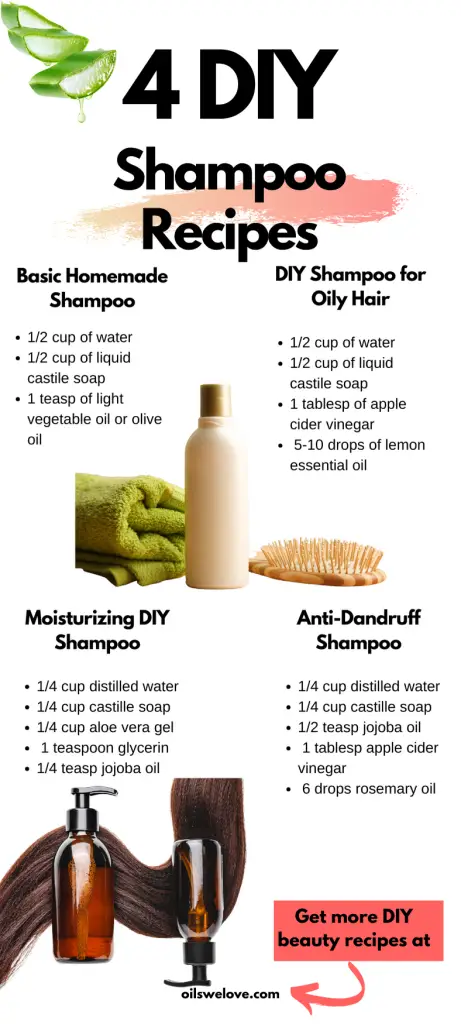
Creating and Testing Your Shampoo
Recipe #1: Basic Homemade Shampoo
To create a basic homemade natural shampoo, you will need: 1/2 cup of water, 1/2 cup of liquid castile soap (unscented), and 1 teaspoon of light vegetable oil or olive oil (for people with dry hair).
- Start by mixing the water and soap together.
- Then slowly add the oil while stirring the mixture.
This recipe is very flexible. You can adjust the quantities based on your hair needs. Just remember to test it on a small patch of hair first to ensure it suits your hair type.
Recipe #2: Homemade Shampoo for Oily Hair
People with oily hair may want to add natural ingredients that help control oil production. One simple solution is to add lemon juice or vinegar to your homemade shampoo. Both lemon juice and vinegar can help balance the scalp’s oil production and bring shine to your hair.
Here’s a recipe: 1/2 cup of water, 1/2 cup of liquid castile soap, 1 tablespoon of apple cider vinegar, and 5 to 10 drops of lemon essential oil.
- First, combine the water and soap.
- Then, incorporate the vinegar.
- Finally, add the drops of lemon essential oil. Mix it well.
Always remember to do a patch test before using to ensure it works well with your hair.
Testing And Adjusting Your Shampoo
After creating your homemade natural shampoo, it’s important to test it out so you can adjust the recipe if needed. Rinse your hair and scalp thoroughly with water before applying the homemade shampoo. Work the shampoo into a lather and massage it onto your scalp and hair. Rinimize thoroughly and let your hair dry naturally.
After the test, evaluate how your hair feels. If your hair feels greasy, you may need to decrease the amount of oil in the recipe. If it feels dry or unmanageable, you might want to add a little more oil. If your scalp feels dry or itchy, you may need to adjust the quantity of vinegar or lemon juice.
One important note is that natural shampoos might not create as much foam as commercial shampoos because they do not contain synthetic ingredients and detergents known as sulfates. Therefore, while testing, focus on how your hair and scalp feel after drying rather than the amount of lather.
Adding Other Natural Ingredients
You can also experiment with other natural ingredients based on your hair needs. For example, if your hair is dry, you can add aloe vera or honey for extra hydration. For dandruff, you can incorporate tea tree oil. Coconut milk is also a good ingredient for extra nourishment and it helps in hair growth.
Just remember, when introducing a new ingredient, only add one at a time. This way, if you have a negative reaction, it’s easy to determine the cause.
Preserving Your Homemade Natural Shampoo
Since homemade natural shampoo does not contain preservatives, it’s best to make it in small batches that you can use within a week or two. Keep the shampoo in a cool, dark place when not in use. If it changes color, smell, or consistency, it’s best to discard it and make a new batch.
Unraveling the world of natural ingredients, understanding their benefits for different hair types, and learning to mix your own shampoo can be a rewarding journey. It enables you to take control of what you put on your body and allows you to customize a solution that caters to your unique hair needs. Whether it’s adding a dash of honey for moisture or a splash of tea tree oil for flaky scalps, the possibilities are virtually endless. So why not take the leap and explore the world of homemade natural shampoos? You may be pleasantly surprised by not just the journey, but also by the healthier, happier state of your hair.


